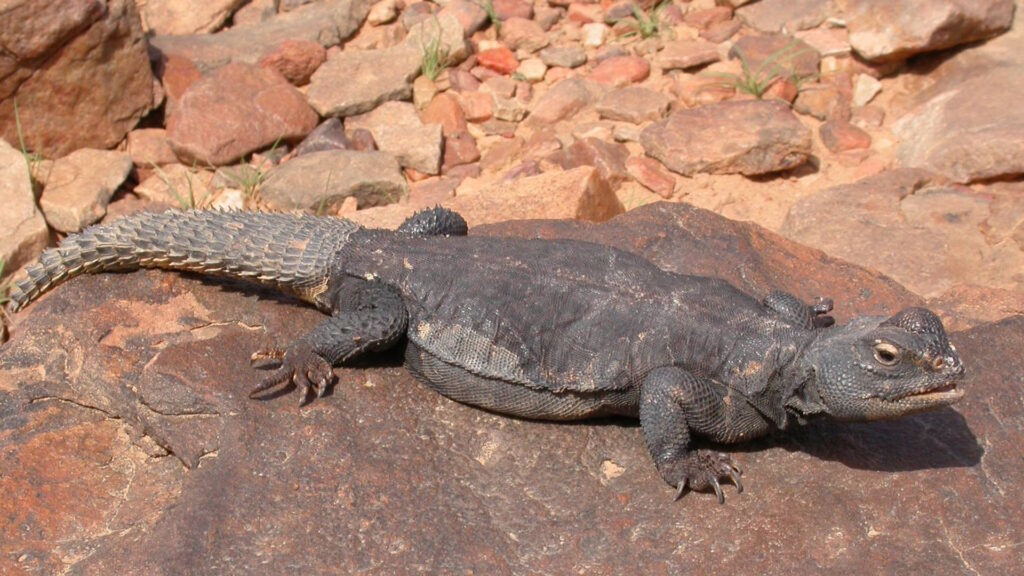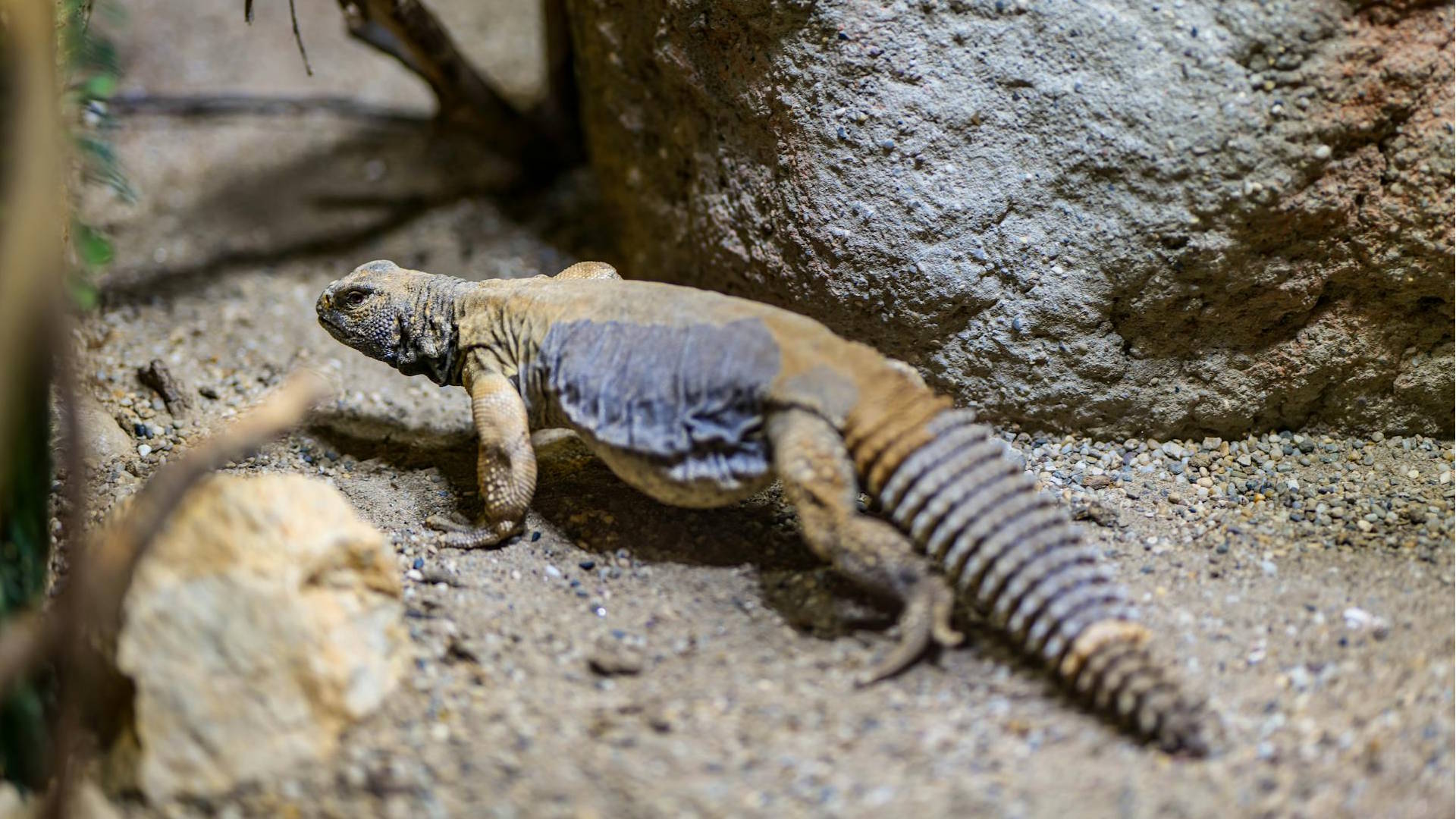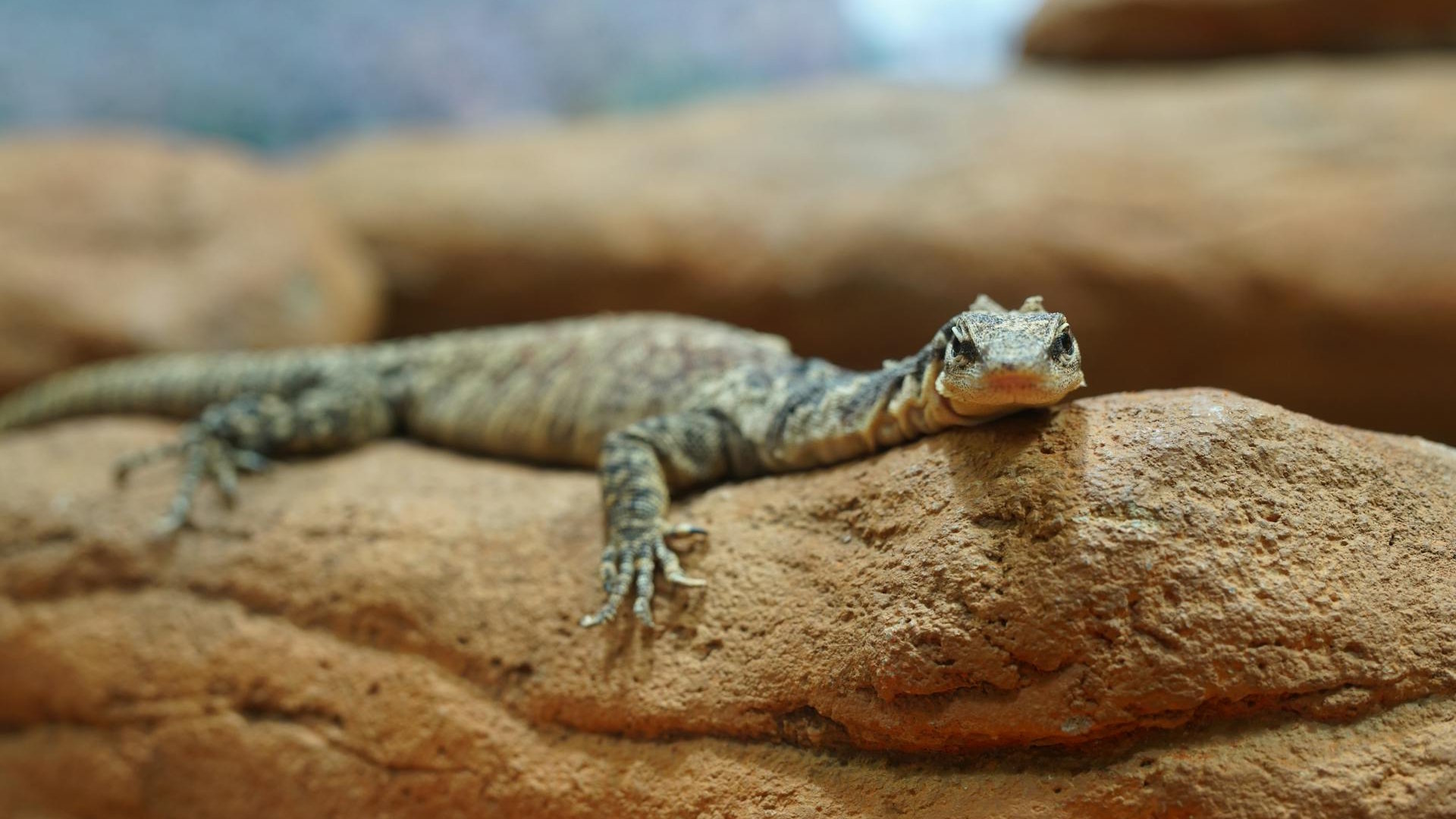In the diverse world of reptiles, certain species have evolved remarkable defense mechanisms that set them apart from their counterparts. Among these fascinating adaptations, few are as dramatic or effective as the weaponized tails found in certain lizard species. From whip-like strikes to spiny clubs, these specialized appendages serve not only as balancing tools but as formidable weapons against predators and rivals. This evolutionary marvel demonstrates nature’s ingenuity in developing structures that serve multiple purposes, transforming what might otherwise be a vulnerable body part into a powerful defensive asset.
The Evolution of Weaponized Tails

The development of a tail as a weapon represents millions of years of evolutionary adaptation in response to predatory pressure. Unlike many lizards that willingly detach their tails as a distraction (autotomy), the species that weaponize their tails have invested heavily in making these appendages stronger and more durable. This evolutionary path represents a significant trade-off, as energy devoted to developing a powerful tail must be diverted from other potential adaptations. Scientists believe these weaponized tails evolved independently in several lizard lineages, demonstrating convergent evolution where similar environmental pressures led to comparable solutions. The fossil record suggests that some ancient reptiles may have had even more elaborate tail weapons than those we see today, indicating this adaptation has been successful for millions of years.
The Intimidating Spiny-Tailed Lizard

Among the most well-known tail-wielding reptiles is the spiny-tailed lizard (Uromastyx), native to North Africa and the Middle East. These stocky desert dwellers possess tails covered in whorls of sharp, protective scales that form an effective defensive club. When threatened, a spiny-tailed lizard will position itself with its head facing the safety of its burrow while presenting its tail toward the potential threat. With remarkable precision, it can deliver powerful side-to-side swipes, using its muscular tail to strike predators with considerable force. The impact from these strikes is magnified by the hard, pointed scales, which can break skin and cause significant discomfort to would-be attackers, making them reconsider their choice of prey.
The Armored Arsenal of the Cordylids

The Cordylidae family, commonly known as girdled lizards or spinytail lizards, native to southern and eastern Africa, features several species that have developed extraordinarily weaponized tails. Perhaps the most impressive is the armadillo girdled lizard (Ouroborus cataphractus), which possesses a tail heavily armored with sharp spines. When threatened, this remarkable lizard takes defensive posturing to an extreme by grasping its tail in its mouth to form a nearly impenetrable spiny ball. This adaptation not only presents a formidable barrier to predators but also protects the lizard’s vulnerable underbelly. The spines themselves are formidable weapons, capable of inflicting painful puncture wounds on any predator persistent enough to continue its attack despite the initial deterrent.
Whip-Tailed Defense Mechanisms

The whiptail lizards (Aspidoscelis species) employ their extraordinarily long, slender tails as precision defensive tools. These tails, which can measure up to twice the length of the lizard’s body, are used with remarkable dexterity to deliver stinging, whip-like strikes against predators or competitors. The tip of a whiptail’s tail can reach speeds comparable to the crack of a bullwhip, creating not only physical impact but also a startling sound that serves as an additional deterrent. Unlike some other defensive tail adaptations, the whiptail’s defense relies on speed and precision rather than bulk or spines. These lizards demonstrate remarkable neuromuscular control, able to target threats with surprising accuracy while maintaining their ability to quickly flee if necessary.
The Impressive Tail Club of the Black Spiny-Tailed Iguana

The black spiny-tailed iguana (Ctenosaura pectinata) of Mexico and Central America possesses one of the most formidable tail weapons in the reptile world. Their tails feature rings of enlarged, pointed scales that become increasingly pronounced toward the base, creating an effective club. When threatened, these iguanas can deliver powerful, sweeping blows capable of breaking small bones or creating deep lacerations. Unlike some other weaponized tails that rely primarily on spines for defense, the black spiny-tailed iguana combines both impact force and cutting potential in its defensive strikes. Young iguanas have less developed tail weaponry, with the spines becoming more prominent as they mature, reflecting the increasing importance of territorial defense and predator deterrence in adult life.
Muscular Adaptations Supporting Tail Weapons

The effectiveness of weaponized tails depends heavily on specialized muscular adaptations that differ significantly from those of lizards with standard or detachable tails. Species with weaponized tails typically possess hypertrophied caudal muscles, particularly at the tail base, providing the power necessary for defensive strikes. The muscle architecture often features modifications that allow for explosive bursts of movement, with some species developing specialized fast-twitch muscle fibers specifically for defensive tail use. Interestingly, the vertebral structure within these tails is also reinforced, with some species showing increased ossification and stronger connections between vertebrae to prevent damage during forceful strikes. These combined adaptations ensure that the tail remains an effective weapon through repeated use without risk of self-injury.
Behavioral Aspects of Tail Weaponry

The deployment of a weaponized tail involves complex behavioral patterns that maximize its effectiveness while minimizing the lizard’s overall vulnerability. Many species display a graduated response to threats, beginning with warning postures that prominently display the tail before actually employing it as a weapon. This behavioral sequence serves as an energy-efficient deterrent, potentially resolving the confrontation without physical combat. Researchers have observed that experienced predators often recognize these warning displays and retreat without further engagement. Interestingly, tail-wielding lizards generally position themselves to maintain visual contact with the threat while simultaneously preparing their tail strike, demonstrating sophisticated threat assessment capabilities and spatial awareness.
The Distinctive Tail-Slapping of Monitor Lizards

Monitor lizards, particularly larger species like the Nile monitor (Varanus niloticus) and the water monitor (Varanus salvator), utilize their muscular tails as formidable whip-like weapons. These powerful reptiles possess tails that make up nearly half their total length and feature dense muscle tissue that can deliver strikes with force comparable to a small crop whip. When threatened, monitors can swing their tails with remarkable speed and precision, generating enough force to break small bones or create painful lacerations on unprotected skin. This defensive capability complements their already impressive arsenal of sharp claws and teeth, making adult monitors formidable opponents even for large predators. Interestingly, monitors will often use tail strikes as a warning before escalating to biting, suggesting a calculated approach to conserving energy during confrontations.
Tail Weaponry in Territorial Disputes

While defensive applications against predators are the most obvious use of weaponized tails, many species also employ them in intraspecific competition and territorial disputes. Male spiny-tailed lizards, for example, engage in ritualized combat where tail strikes feature prominently as a means of establishing dominance without resorting to potentially more damaging bites. These contests typically follow predictable escalation patterns, with tail displays preceding actual physical contact. Researchers have documented that individuals with more impressive tail weaponry often win these encounters with minimal physical engagement, suggesting the weapons serve an important signaling function beyond their physical impact. This dual-purpose utilization of tail weapons for both predator defense and social signaling represents an efficient evolutionary adaptation.
The Chemical Enhancement of Tail Weapons

Some lizard species combine physical tail weaponry with chemical defenses, creating a multi-modal deterrent system of remarkable effectiveness. The most notable example is the girdle-tailed lizard (Cordylus cordylus), which possesses specialized glands near the base of its spiny tail that secrete noxious compounds when the animal is threatened. When the lizard strikes with its tail, these chemicals are transferred to the predator, causing irritation and discomfort beyond the physical impact of the spines themselves. This chemical component significantly enhances the defensive capability of the tail, as predators learn to associate the distinctive appearance of the spiny tail with both physical pain and chemical distress. The evolutionary development of this dual-defense system demonstrates sophisticated adaptation to high predation pressure in their natural habitats.
Regeneration Limitations in Weaponized Tails

Unlike many lizards that can readily detach and regenerate their tails, species with weaponized tails have generally sacrificed this ability in favor of developing a more effective defensive tool. This evolutionary trade-off reflects the greater survival value of maintaining an intact weaponized tail compared to the escape strategy of tail autotomy. When damage does occur to weaponized tails, regeneration is typically much slower and less complete than in autotomizing species, with regrown portions often lacking the specialized scales, spines, or muscular development of the original. This limitation highlights the significant investment these species have made in their defensive adaptation. Some species demonstrate a partial compromise, with the capability to break the tail only at specific points and with limited regenerative capacity, suggesting an evolutionary middle ground between complete autotomy and no regeneration.
Conservation Concerns for Tail-Wielding Lizards

Several species known for their weaponized tails face significant conservation challenges in the modern world. Habitat destruction poses the primary threat, with specialized desert and rocky habitat dwellers like spiny-tailed lizards particularly vulnerable to landscape alteration and mining activities. The exotic pet trade has also placed pressure on certain species, with their distinctive appearance making them desirable to collectors despite the challenges of proper care in captivity. Climate change presents additional concerns, as many of these species have evolved precise adaptations to specific temperature ranges and seasonal patterns that are now experiencing disruption. Conservation efforts for these remarkable reptiles require habitat protection initiatives alongside education programs highlighting their ecological importance and the evolutionary significance of their unique defensive adaptations.
Studying Tail Mechanics Through Biomimicry

The remarkable efficiency of lizard tail weapons has not escaped the notice of engineers and roboticists seeking inspiration from natural designs. Researchers studying biomimicry have analyzed the structure and movement of weaponized tails to develop more effective robotic appendages for various applications. The combination of flexibility, strength, and precision demonstrated by these natural weapons offers valuable insights for designing everything from industrial manipulators to search-and-rescue robots. Particularly interesting to engineers is how these tails achieve significant force generation while maintaining relatively low mass and energy consumption. Some cutting-edge soft robotics projects have directly modeled their designs on the segmented structure of monitor lizard tails, seeking to replicate their combination of structural integrity and flexible movement capabilities.
Conclusion

In conclusion, the evolution of tails as weapons represents one of nature’s most fascinating defensive adaptations. From the club-like appendages of spiny-tailed lizards to the precision whips of monitors, these specialized structures demonstrate how evolutionary pressures can transform a standard body part into a sophisticated defensive tool. These weaponized tails not only provide protection against predators but also serve important roles in social signaling and territorial disputes. As we continue to study these remarkable adaptations, they offer insights into evolutionary biology, biomechanics, and potentially inspire new technological developments. Yet as with many specialized adaptations, they also create conservation challenges as these species face changing environments. The lizards that use their tails as weapons stand as testament to the incredible diversity of solutions that evolution can produce in response to the constant challenge of survival.




